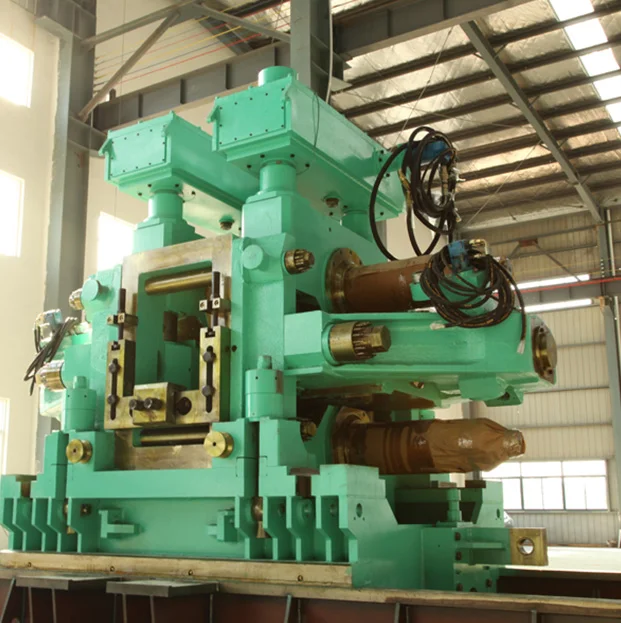How to choose the right section steel universal rolling mill?
Section steel universal rolling mills play a crucial role in the manufacturing industry, particularly in the production of various steel sections used in construction, infrastructure, and other sectors. Choosing the right rolling mill is essential to ensure optimal performance, efficiency, and cost-effectiveness in your operations. In this blog post, Yushun will provide you with a comprehensive guide on how to choose the perfect section steel universal rolling mill for your specific requirements.
Understanding Section Steel Universal Rolling Mill for sale
Before delving into the selection process, it is important to have a clear understanding of what section steel universal rolling mills are and how they work. These rolling mills are designed to process different types of steel sections, such as I-beams, H-beams, channels, angles, and more. They utilize a series of rollers to shape and form the steel into the desired sections, ensuring precise dimensions and high-quality output.
Factors to Consider When Choosing a High Quality Section Steel Universal Rolling Mill
1. Production Capacity
The first factor to consider is the production capacity of the rolling mill. This refers to the amount of steel sections the mill can produce within a given time frame. Assess your production requirements and choose a rolling mill that can meet or exceed your desired output. Keep in mind that investing in a mill with higher production capacity may require a larger initial investment but can lead to increased productivity and profitability in the long run.
2. Size and Weight Range
Different rolling mills have varying size and weight range capabilities. Consider the maximum and minimum size and weight of steel sections you plan to produce and ensure that the rolling mill you choose can handle these specifications. It is crucial to select a mill that can accommodate your current and future production needs to avoid limitations and potential bottlenecks.
3. Material Compatibility
Section steel universal rolling mills are designed to process various types of steel, including carbon steel, alloy steel, and stainless steel. Ensure that the rolling mill you select is compatible with the specific type of steel you intend to work with. Consider the material's thickness, hardness, and other properties to ensure the mill can handle the required processing.

4. Automation and Control Systems
Modern rolling mills often come equipped with advanced automation and control systems to enhance productivity, accuracy, and ease of operation. Consider the level of automation and control features offered by different rolling mills. Look for features such as programmable logic controllers (PLCs), human-machine interfaces (HMIs), and real-time monitoring capabilities. These features can streamline your operations, reduce human error, and improve overall efficiency.
5. Maintenance and Service
Regular maintenance and timely service are crucial for the smooth operation of any rolling mill. Look for a manufacturer or supplier that offers reliable maintenance and service support. Consider factors such as availability of spare parts, technical assistance, and warranty options. Choosing a rolling mill from a reputable manufacturer with a strong service network can ensure minimal downtime and efficient troubleshooting when issues arise.
6. Energy Efficiency
Energy consumption is a significant consideration in any manufacturing process. Opting for an energy-efficient rolling mill can help reduce operational costs and minimize environmental impact. Look for mills that incorporate energy-saving features such as regenerative braking systems, efficient motor drives, and optimized process control algorithms.
7. Cost and Return on Investment (ROI)
Lastly, consider the cost of the rolling mill and evaluate the potential return on investment (ROI). While it may be tempting to opt for a lower-priced mill, it is important to assess the long-term benefits and overall value it provides. Consider factors such as productivity gains, energy savings, maintenance costs, and the mill's expected lifespan. A higher initial investment in a quality rolling mill may yield better ROI in terms of increased productivity, improved product quality, and reduced operational costs.
Conclusion
Choosing the right section steel universal rolling mill is a critical decision that can significantly impact your manufacturing operations. By considering factors such as production capacity, size and weight range, material compatibility, automation and control systems, maintenance and service, energy efficiency, and cost, you can make an informed decision that aligns with your specific requirements. Investing time and effort in selecting the perfect rolling mill will ultimately lead to improved productivity, efficiency, and profitability in your steel section manufacturing process.
https://www.wxisun.com/How-to-choose-the-right-section-steel-universal-rolling-mill.html
Yushun
yushuntech@163.com
Post Comment